In the Studio: Samira Abbassy
“My attempt in depicting the human form is almost like a psychic x-ray, so the n...

Ash Arder is a Detroit-based transdisciplinary artist, organizer, and educator, and a 2023 Joan Mitchell Fellow. We interviewed her about her work and creative practice in February 2024. The following is an edited transcript of that conversation.
In my work, I'm always thinking about the relationship between humans and the natural world, and trying to understand the systems at play within that relationship. I am interested in understanding the tools, implements, infrastructures, and other mediators of this relationship.
My making process is really a question-asking process. I just happen to work with my hands as a way to ask. Sometimes I'm working with fibrous material, like textile. Sometimes I'm exploring technology and interactive electronics—sound, still imagery, moving image. I've spent a lot of time in archives, in labs, in gardens, in factories, as I’m working through the questions that I have about why we're here and what we're doing while we're here—both positive and negative. How are we being exploitative of the environment? And how are we rectifying that or getting in right relationship to the land?
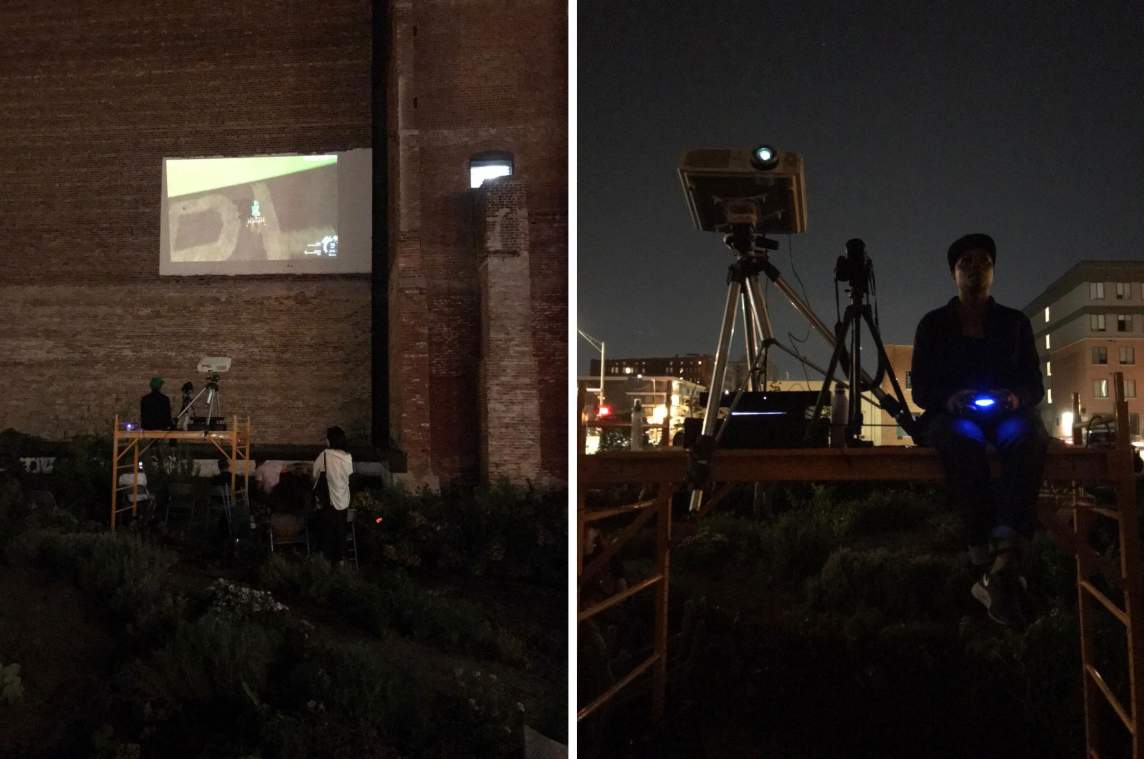
That line of questioning and my lived experience in all these different types of spaces are huge parts of the work for me. Sometimes there are objects or sounds or documentation of that process that get put in spaces like galleries and museums.
I don't usually think of my works as ever really being complete, or as answers to any of my questions. My motivation is often just to try to understand how things work, how people work, how vegetation works. And then I think I’m trying to find overlap or similarities or ways to be better—not in the way that capitalism would have us think is about efficiency, but better emotionally, spiritually, more connected. How can we be more empathetic to not just other humans, but to our more than human kin, too?
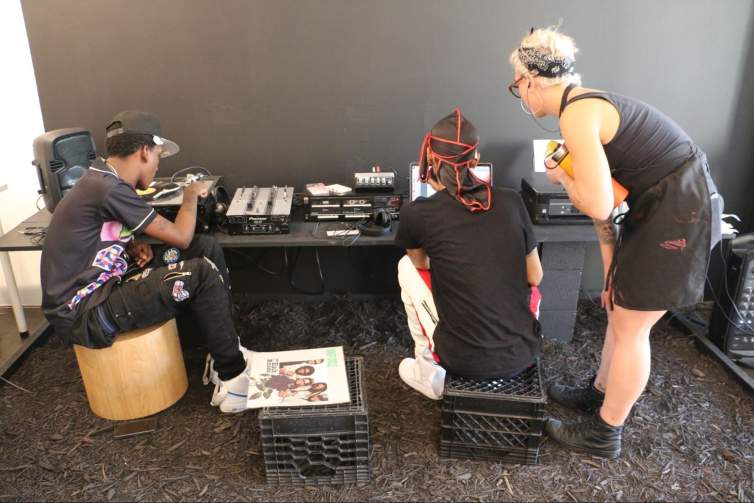
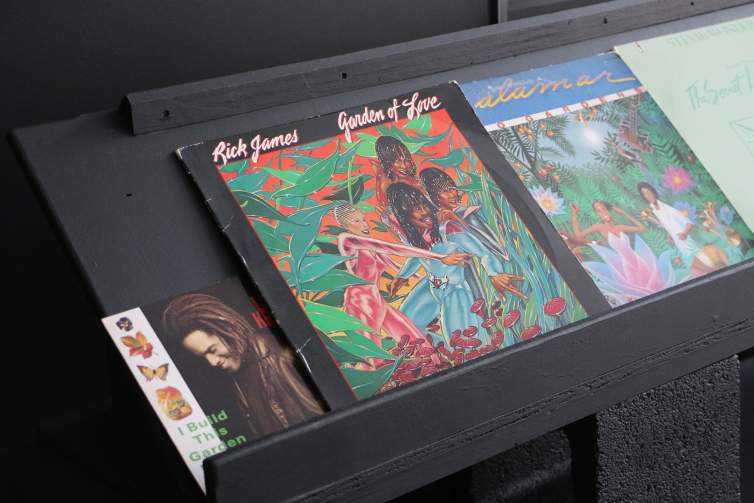
My practice is very much about holding space. I didn't always know that you could have a career or make your life's work be about holding space. Nobody gave me that language, necessarily. But I think creative people, including artists, are one category of human that holds space, as are healers, and educators.
I’m curious about ways to create more symmetry and peace and joy and pleasure, to create containers that we can better exist in, without that meaning that some other entity has to suffer or not have joy or not have pleasure so that we can. And then once I’ve figured out a little tiny way of doing that in my own life, my artistic practice is about modeling that for other folks in my family or in the community, while also continuing to explore and do other things.
It's so important to me to archive the fact that I'm making this work. Working in technology and solar in particular, oftentimes I find myself at the edge of different sectors, through my questioning. One of the things that's been really frustrating as a maker has been finding very few of my people—urban, BIPOC, femme, millennial—working in the spaces I find myself in. When I encounter that frustration, it's been really important to not just get the information from whomever is keeping the information, but then to figure out a way to archive it or represent it back, so that people who look like me or feel like me can find it, in spaces that feel welcoming to their embodied selves.
It’s important to me to let folks know that I was here. My family and their stories were here. It's important that our stories don't get lost or told in ways that strip us of our agency and dignity.
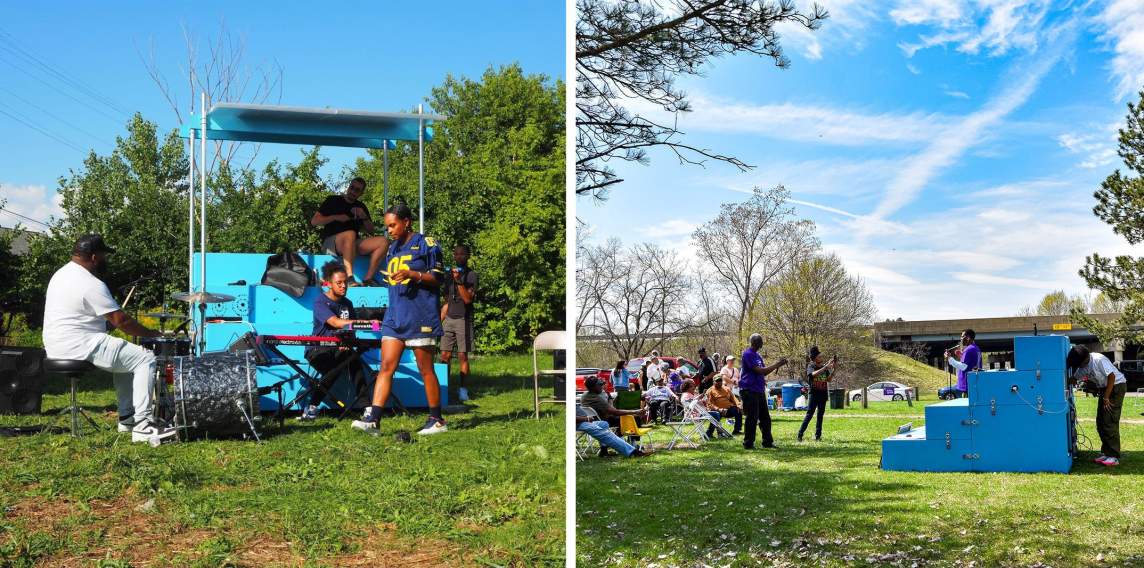
Solar energy and clean energy are really big parts of my toolbox. I've been deploying solar-powered infrastructure into the Detroit community where I live for almost 10 years. Usually that happens outdoors, kind of like boots-on-the-ground, grassroots community projects, not necessarily in white cube institutional spaces. There have been a few different iterations of that, including Whoop House, which is a mobile sculpture that includes a solar energy micro-grid designed to power musical equipment like keyboards, turntables, microphones, and speakers. The modular design of the sculpture allows it to travel between neighborhoods and cities educating people about clean energy through music, storytelling, and play. When it isn’t traveling, it is the centerpiece of a garden in Detroit’s Black Bottom neighborhood.
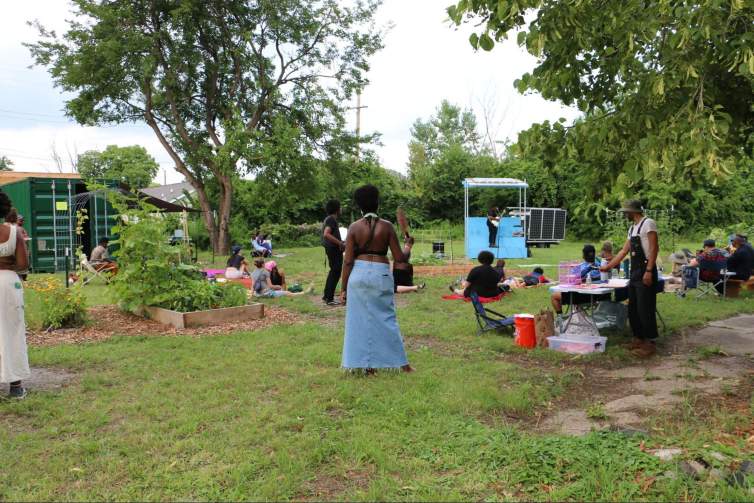
Recently, I was able to bring that technology into an institutional space, and it’s a great example of my approach to working. I had a show where it was really important for me to power one of the works with solar energy, to keep these perishable objects that I made and housed inside a refrigerator from melting. To do this, I needed to install solar infrastructure on the roof, so the portable battery packs powering the fridge could be recharged.
The work requires a certain level of conversation and a certain discomfort with institutional status quo. It was a process of working with the museum to get all of the red tape cut away so that I could put solar on the roof, and convincing or modeling for the institution that it didn't mean that I had to drill into the roof or destroy the infrastructure of the building to make this happen.
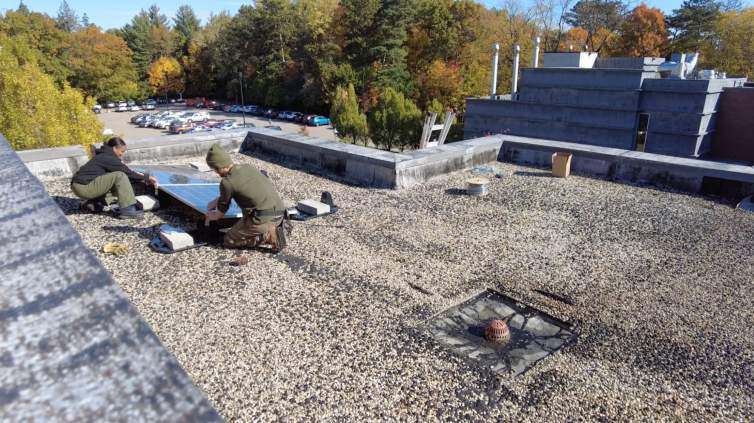
Then conceptually, powering the refrigerator was also a kind of sneaky way of encouraging people to be more mindful about the way that we're using electricity and fossil fuels. The project was a way of demonstrating that if we had a different way of powering some of our essentials, then so many people wouldn't lose their food when the grid goes down—which happens in Southeast Michigan, and has been happening more often because of climate and global warming oriented problems.
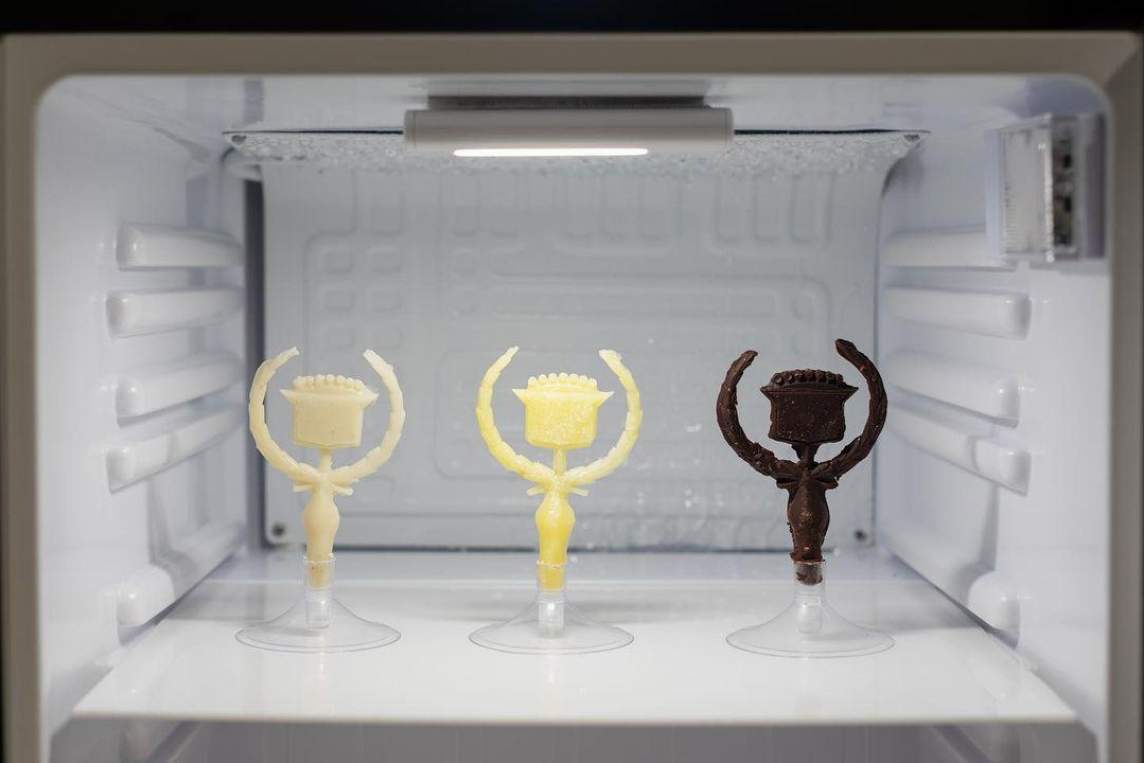
For this museum show, I was storing these kind of frivolous consumable items in the fridge— butter, chocolate, and shea butter emblems that I made. Those are not essentials. Nobody needs chocolate to survive, but it's about modeling alternative energy sources in a subtle way. Replace these refrigerated art objects with a small family's essential food and medicine supply, and we can see how the work is about infrastructure. And the fact that I'm showing you how to power infrastructure using energy from the sun. Maybe somebody will think about that when they get home and say I could do this, too—if not alone, then with a group of my neighbors.
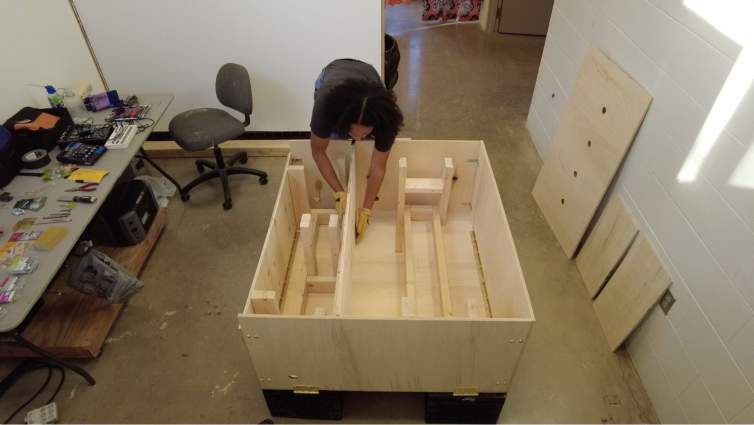
Right now, I'm sitting in my new studio, which doesn't have many of my tools in it because I'm also a fellow at a nearby grad program, at Cranbrook Academy of Art. I have a studio there, and I also have a studio at my house. My work really happens all over the place, and the thinking part of my practice happens constantly. The studio of my brain is always going. I'm kind of never and always working as an artist, which is beautiful, but also exhausting sometimes, if you don't have good boundaries.

Because I'm constantly thinking and making works in my mind and piecing things together, the physical spaces where I work tend to be kind of like repositories for objects and storage for tools and electronics. The site where I'm at now is about half a mile from my house, and half a mile from Belle Isle, which is this island that sits between Windsor, Canada, and Detroit. Belle Isle is the reason why I chose the neighborhood that I live in. It's a really beautiful, natural place to go and swim in the river. There's a conservatory to experience different plant life and beautiful grounds and trails—really wonderful places to experience natural environments. It's really important for me that my workspace be accessible to that, and accessible to my home. I'm also about three miles east of downtown, so for me, it’s a really wonderful, inspiring zone of the city to work in.
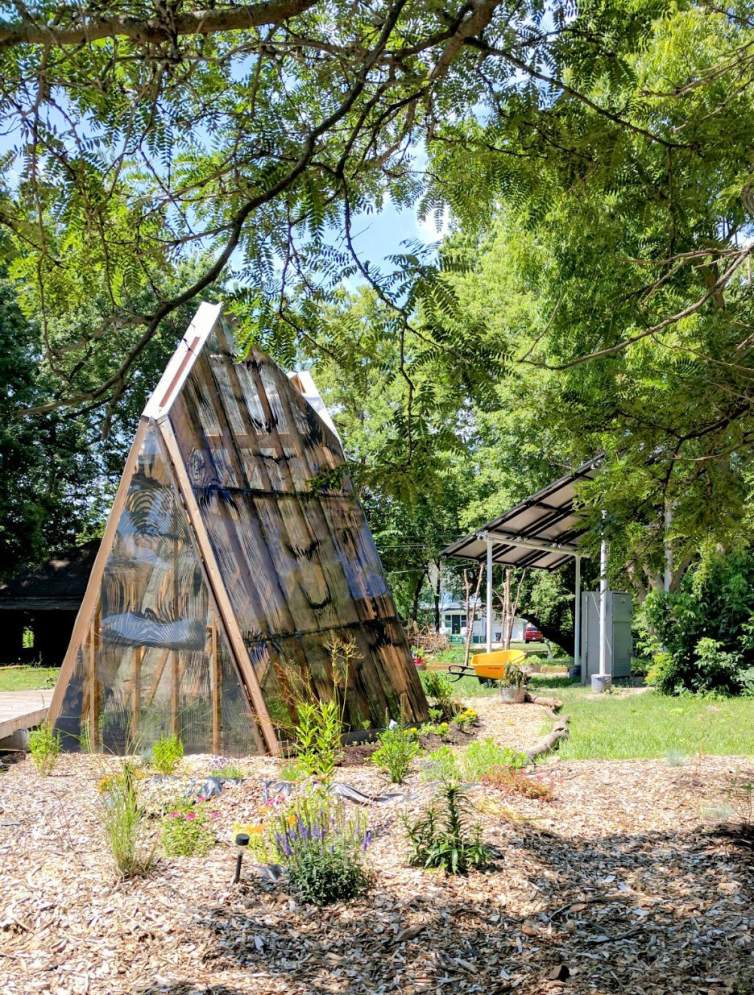
This studio also happens to be not far from a place that constantly loses power because of its proximity to flood zones. Some of my work in infrastructure and in solar takes place in the neighborhood that's just under three miles east of where I'm at now. They get a lot of flooding coming in, and the power goes out. So solar has been a really important resource for that neighborhood, because they can charge devices and other things when the grid goes down.
This space geographically feels really aligned in terms of what I'm thinking about and where. Having a community of folks that are working nearby feels really wonderful. Having the option to invite community members to my studio or to be able to be outside in community in five or ten minutes feels great.
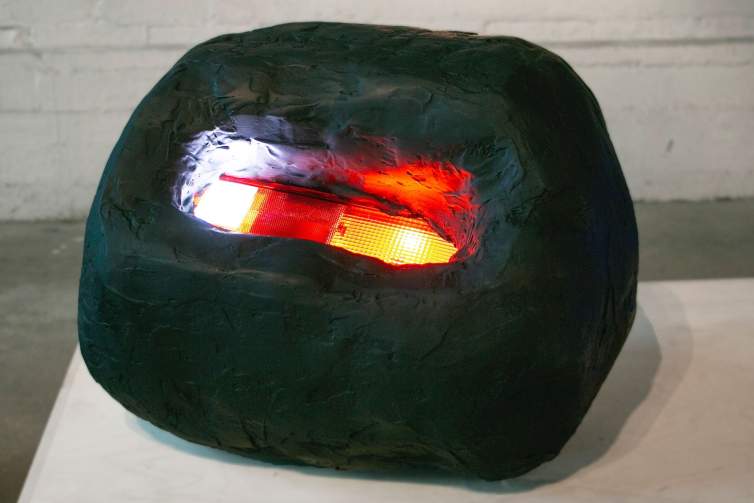
Being born and raised in Michigan, and then living here after living in a few other places, I’m really aware of how much of a car-oriented place this is, for better or worse. I’ve spent a lot of time in the car driving from place to place, and you just notice headlights or bumpers or steering columns in gardens, yards, on the side of the highway. I've been collecting trashed automotive parts for quite some time. I just started picking them up. I don't know what that was about other than maybe feeling connected to these kind of bodily looking objects.
A couple years ago, I made a sculpture, Joey, with a found automotive light that I rewired and brought back to life in the form of a kind of speculative sci-fi boulder entity. It functions as a light, so you can plug it in and it will emit light. But I think it's about imagining a space where things that are kind of the excrement of the Motor City, of that industry, can be brought back to life in curious or strange or stimulating ways.

Joey is part of an ongoing series where I'm thinking about trashed or found headlights as having a second life in domestic spaces or in interior spaces. I’m questioning, what are the objects of the future, if maybe we don't actually even use headlights in a hundred years? And might these sort of art objects hint at a bygone era or help people of the future think through what we used to throw away?
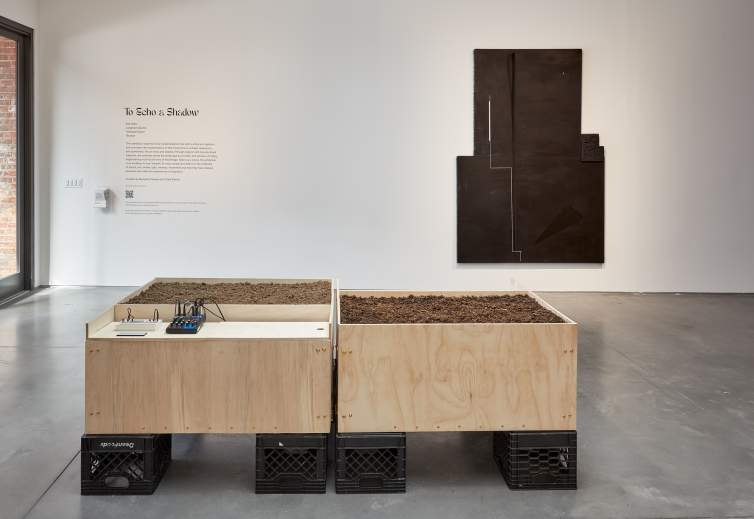
The project I'm working on now revisits an old project, which combines the concept of broadcasting from a data transmission perspective and broadcasting from an agricultural perspective into one idea. It's essentially a glorified garden tool, which uses sound to broadcast or spread seeds onto beds of soil that are incorporated into a wooden sculpture. It's a sound box, ultimately—a wooden box with speakers inside that gets activated through performance, with a soundscape that I compose. And through that activation, there's enough vibration in the speakers for the seeds that I pepper into the inside of the sculpture to move onto beds of soil that lay atop the sculpture. Those beds of soil are on trays that are modular, so they can be taken and planted in real time.
This particular iteration of the project was just launched in New Haven, Connecticut, in the Dixwell neighborhood. It’s a historically Black cultural corridor, with a really wonderful jazz history. The soundscape that I'm composing in conjunction with the sculpture is going to reflect on the Monterey Cafe, which is a really important jazz venue that is no longer open, although the building is still there. My soundscape is kind of a sonic collage that mixes sounds that I've collected with existing sounds from archives to tell a loose narrative about people, plants, and place. The show will be up at NXTHVN until May 19th.

One of the things that really moves me about working with sound and interactive objects is a kind of visceral bodily response. It's really wonderful when people can encounter an object that I've made or a space that I've created and have a visceral moment of reflection. I think that operates on a physiological register, but also emotionally, spiritually, mentally. I sometimes think about my works as meditations, and this gets back to not thinking that I'm making things that are resolved or complete. They're my own meditations or questions.
My hope is that, through the objects, someone might be able to meditate alongside me or contemplate some of these things that I'm contemplating as well, and then go back out into their own community or the spaces that they navigate with a different way of looking, a different way of asking. I want folks to know that there is a different way of considering the way that energy is generated, not just within living beings, but with inanimate objects as well.
This relates to the fact that I don't think inanimate objects are passive. I don't think that they're just sitting around waiting for sentient beings to activate them. They're made of matter. They're emitting energy, they're collecting energy. I want people to be more curious about the environment that they're in, and to take that curiosity a step further and maybe move it into a space of empathy or a more intentional way of living.
Interview and editing by Jenny Gill. Learn more about Ash Arder’s work at asharder.com and on Instagram.